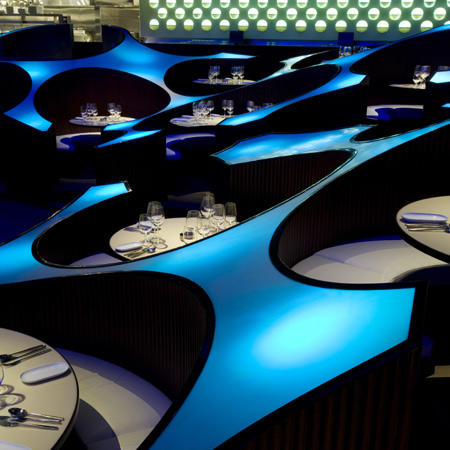Late last night I had asked folks on my personal journal for suggestions on what I should talk about at DGD. Since I’m a designer, not a writer (nor do I aspire to be one, or play one on TV), and like it or not, blogging in public is well, blogging in public, it’s partially about who is reading as opposed to who is (grudgingly) writing.
I got a lot of suggestions, but the biggest problem I found with them is that they all tend to run into a roadblock somewhere along the way. Either they’re asking about things that I don’t have enough information about to speak on with any kind of firm knowledge, or they’re asking for in-depth things about past projects, which I don’t mind doing but I worry that it will get me further typecast into kinds of design I honestly am trying to break away from since that’s what people will see when they come here.
On the other mitten, I also worry about talking too much about projects I’m just starting to work on, or am conceptualizing. On the one hand, I am all for the free exchange of ideas and it is more about what kinds of design I’d like to be doing. What I worry about is more along the lines of intellectual theft.
And on the third mitten (just call me Kali…), I would like to do more here than just praise or criticize other things on the intertubes, because seriously, that gets old really fast, and I’m a designer, not a design critic, even if thoughtful critique is part of what we do. Granted, I can be a grumpy, critical bitch better than most, but still, I could probably rest on my laurels on that score *forever* at this point and still come out looking like a champ.
So any suggestions (though I am going to try to work my way around the slalom of suggestions I got last night) are welcome. Questions are, as well.
In the meantime, while I’m tapdancing, I wanted to go back to restaurant design for a moment. Okay, not for a moment, since that remains my favorite kind of design. But for now, a moment.
See, design photography is really difficult. It’s often hard to get a decent angle on a space. You’re using a wide angle lens in order to get the whole thing in, which creates a forced perspective and makes rooms look larger than they are. Most restaurants don’t have lighting suited to good photography. Even though it’s a room, and not a person (though sometimes there are people in the room) it’s hard to show what a restaurant really looks like without physically being there in a way that doesn’t “lie”, for good or bad. It occurred to me tonight that I hadn’t taken the opportunity to mention someone who I think does this better than anyone I’ve ever seen.
Noah Kalina(who, as far as I know, is of no relation to my dear departed friend Amy, and isn’t someone I know. I’ve just had his site bookmarked for ages and I think he takes amazing shots of restaurants.) By means of example (and hopefully a way to get everyone to go there and check his archives because they’re amazing), this is his photo of Bar Boulud:
Since I know some of you are totally into restaurant design porn, that ought to keep you busy until I can figure out what I should be talking about here. I’ll be over here tapdancing (and knitting) in the meantime.
P.S. Tori, stop drooling on the keyboard.








